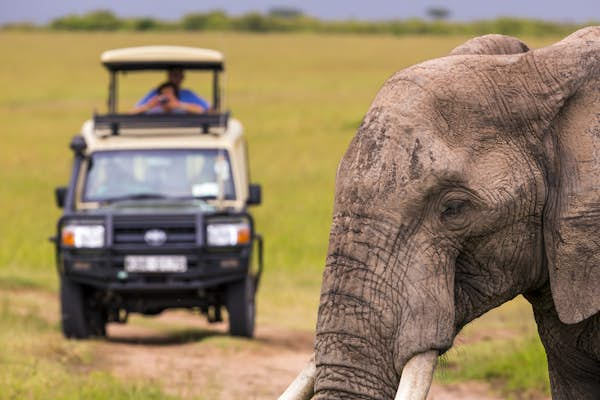Wildlife tourism is one of the most exciting and unforgettable ways to have a hands-on experience with nature. From spotting lions in Africa to watching whales breach the surface of the ocean, wild creatures are beautiful and powerful in ways that take one’s breath away. However, tourism that incorporates wildlife must always have a high level of responsibility and consciousness. Most travelers are not aware how much damage ecosystems, animal behavior, and society are impacted by their actions, even if those actions are done unconsciously. Responsible wildlife tourism is a concept that every traveler must learn in order to plan their safari in a way that is not only exciting but also morally right.
Opting For Responsible Tour Companies
The company or organization you choose to travel with greatly determines how wildlife is treated. All responsible tour operators have policies in place that ensure animals in their natural habitats are not disturbed. Many tour operators collaborate with local conservationists, hire local guides, and endorse conservation programs. When booking wildlife excursions, travelers should take time to investigate and choose operators that brandish conservation certifications and have affiliations with conservation organizations. Do not book with operators that provide guarantees of animal interactions or permit direct contact with animals or staged performances.
Boundaries for Animals in the Wild
It is vital for responsible wildlife tourism to respect the limits animals have in their natural surroundings. Observing appropriate measures to provide a safe distance minimizes both your and the animals’ safety as well. Shouting, trying to feed, or using flash photography on wildlife should always be avoided. Wild animals turning aggressive or excessively dependent on human food can be extremely dangerous for the animals and even lead to death. By remaining quiet and patient, animals can be observed in a genuine manner, and meaningful wildlife encounters can be respectfully achieved.
Helping Communities and Their Conservation Activities
Responsible tourism goes beyond caring for animals; it also relates to the people who live near these wild spaces. Supporting local people by booking local hotels and guides and buying local souvenirs helps drive the local economy. This aid often supports conservation projects and educational programs. Custodians of the environment tend to conserve it, and tourism helps them to protect their ecosystems and wildlife. Joining local ecotourism programs helps the traveler understand the culture better and have a more meaningful travel experience.
Avoiding Codified Wildlife Exploitation
Examples of codified wildlife exploitation include elephant rides, tiger petting, and dolphin shows. Most of the animals are tortured under a regimen of cruelty and abnormally constricted living spaces. Even animals that seem to be well taken care of are often highly stressed and deprived. Instead of engaging in these types of attractions, participate in programs that enable you to watch animals in their natural habitat or in well-managed rehabilitation ecosystems that don’t permit hands-on contact but focus on rehabilitation and conservation.
Reducing a Traveler’s Carbon Footprint
When traveling to observe wildlife, an individual may begin their journey to sensitive parts of the world. Therefore, travelers should aim to reduce their carbon footprint by following leave-no-trace, using refillable water bottles and bags, and properly disposing of waste. Choosing green accommodations, using public transport, and changing energy consumption habits to be less than normal can all add to the emission of carbon and help travel sustainably. Conservation and emission-capable initiatives can be availed, which help to counter the emission of carbon from both flights and long-distance travel. Carbon emission can also be countered by visiting less distant wildlife destinations. All of the above help reduce carbon footprint and, along with small trip choices, add up to help reduce environmental impact.
Responsible Wildlife Tourism Starts with Preparation
It is greatly advised to have proper preparation by knowing all the caring issues of the place. Before booking a trip to one of the wildlife zones, it is advised to research the concerns and issues of the wildlife in the area. Proper preparation also allows the person to have a great travel experience and be able to spot all the amazing travel sights. Understanding conservation challenges and travel research can greatly help in enriching your trip and minimizing emission of carbon. It is also greatly advised to be informed to provide better answers, be less confused, and contribute emission very positively to the wildlife zones.
Volunteering and Giving Back
Some vacationers want to help instead of just looking at the attractions. It’s a good idea to volunteer at well-known wildlife centers or donate to credible charities. Nevertheless, it is important to check wildlife volunteer opportunities because some of them charge for volunteering and may not take care of the animals. Programs that offer real help through habitat restoration, scientific study, or animal rehabilitation tend to be more meaningful. Supporting projects that work against poaching of endangered animals and donating for wildlife conservation permits also allow your trip to be more useful.
Capturing Wildlife Moments Responsibly
Nothing brings back the memories of a trip like taking photographs, but remember to respect the animals and the environment. Don’t put yourself or wildlife in risky situations for a picture. It’s best to use a zoom lens for faraway shots and avoid flash like the plague. Posting wildlife experiences online is a good way to advocate for wildlife, but care should be taken to avoid tagging places and using captions that will hunt poachers. Promoting wildlife tourism through responsible captioning can get people interested in wildlife conservation.
Being a Good Example for Fellow Travelers
Every traveler has the power to influence other people who travel. By upholding the right actions, you may be able to encourage other tourists to do the same. It includes your shoutout for socially responsible tourism and animal encounter shows, your online praises for animal-friendly tour guides, or courteous reminders for animal encounter shows to keep a distance from animals. It is your right to express your opinion, and with the knowledge you have gained, you are encouraged to help in the movement of conservation through writing in blogs, reviews, or simply talking about it. If the members of the traveling society are educated about the right actions towards wildlife, it is more likely that animals, together with their homes, will be protected for the coming generations.
Conclusion
There are many opportunities around the world for traveling and enjoying nature and wildlife. Wildlife and tourism are closely interlinked, and enjoying wildlife has a certain magnitude of responsibility. Each traveler is accountable to foster the natural resources with awareness, rescue them from the debilitating impacts of man, and practice ethical wildlife tourism. Each traveler should know that their experience and fun do more than just personal gain. Ethical and natural wildlife tourism contributes to nature conservation, supports the preservation and protection of wildlife, and improves the living conditions of local communities, which ultimately helps wildlife remain in their natural habitats.
FAQs
1. What does responsible wildlife tourism mean?
Responsible wildlife tourism allows for people to travel to view wildlife in a way that respects conservation efforts and local communities. It avoids harming animals or ecosystems and promotes long-term sustainability.
2. Why are feeding or touching wild animals considered unlawful practices?
Touching or feeding wildlife can pose health risks for them and for humans. It can alter normal wildlife behavior and put a strain on them, making them dependent on caretakers.
3. How can I identify ethical wildlife tour operators?
Operators with certifications from conservation organizations are a favorable starting point. Furthermore, reading reviews as well as looking into their animal welfare policies can help. Steer clear of those that offer animal performances or close interactions.
4. Are wildlife sanctuaries ethics-based?
Not all sanctuaries are ethical. Ethical sanctuaries do not allow public handling of animals, focus on rehabilitation and conservation, and provide a natural enclosed environment as their habitat. Research before visiting to learn about their policies.
5. Wildlife tourism does seem to help?
Wildlife tourism, when done responsibly, can provide important funding for conservation programs, help local economies, and increase awareness about wildlife and ecosystem protection.




